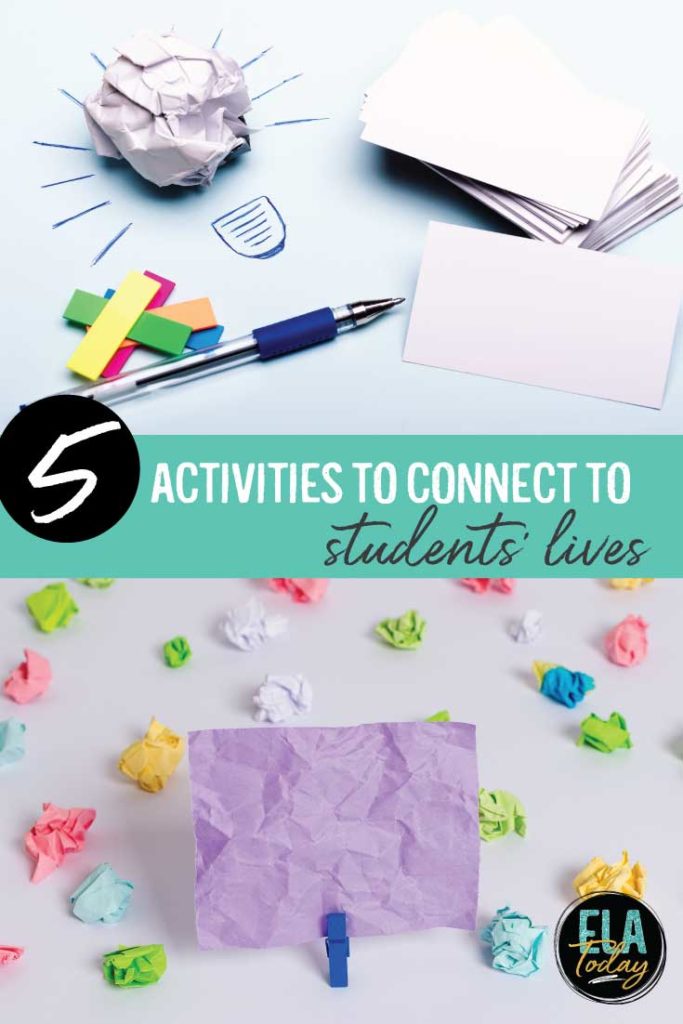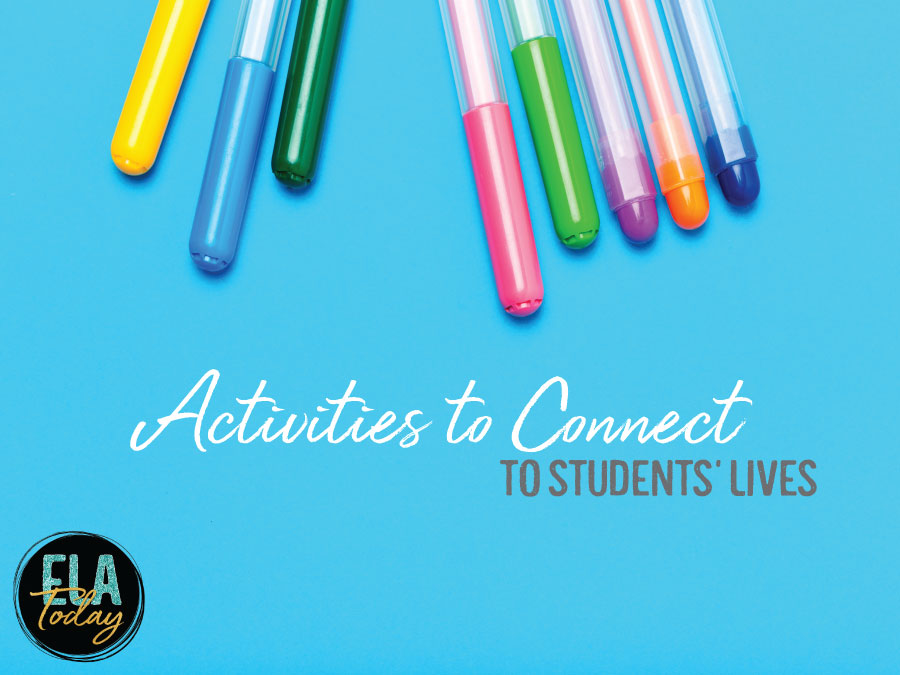Looking for activities to connect to students’ lives?
We’ve all had that question: when will I use this?
When students pose that question, I know what they crave: activities to connect to students’ lives. They will never directly state that, but I’m happy to oblige.
The truth is that in language arts, our material does connect to their lives. Language, literacy, and speaking are necessary for every job, for personal success. Sometimes with a direct explanation and well-placed lesson, students will see that connection. Below are five activities to connect to students’ lives.
Media Literacy
In our digital world, students should understand that anyone can create media and that normally, people have a reason for doing so. Sometimes I ask students who owns news stations or certain companies. We typically end up discussing who pays for research and think tanks. As citizens, students should be aware of what is behind the media that pays millions of dollars to influence them.
With a media literacy lesson, you can cover these important ideas. Students will learn the terms from advertising, analyze food products’ packaging, and draw conclusions. Teenagers love to eat! I purposefully chose to look a food packaging and marketing so the lesson would tie to their everyday lives.
I made this media literacy activity in conjunction with my husband who owns an advertising agency. After seeing him develop marketing tools, I created a lesson with him that would break down pieces for students.
Language Study
Specific language entertains students, but they might not be aware of that. When students and I study poetry, I ask them to submit their favorite songs. (I typically have them submit the information through a Google Form so that I can sort easily.) I read through the submissions and find examples our devices. Then, we can draw conclusions of how the language shapes the overall effect and messages.
Other times, we use videos to differentiate between difficult concepts like assonance, consonance, and alliteration. These activities are perfect to connect to students’ lives because teenagers surround themselves with music, and the language concepts are easily found in their songs.
Audience Analysis
Audience members have several jobs: holding the speaker accountable, being attentive and respectful, and interacting with the speaker. As speakers, students should analyze their audiences to improve their messaging. As audience members, they should understand the research and targeting from speakers.
With an audience analysis activity, students will see the effort in learning about an audience from both the speaker and audience’s point of view. By looking at back-to-school commercials, students will see that they, their parents, and their teachers are a target audience. Students will look at how the messaging, actors, and music target these groups.
As a culminating activity, students will examine how commercials target them and how they can use those methods when they are speakers.
Nonfiction
When I teach informational texts, I approach lesson planning with the goal to empower students. Students should find primary sources, question an author’s premise, and continue to research a topic. Sometimes (similarly to the media literacy activity) I introduce a high-engagement informational text with the idea that writers have a purpose for sharing information. What is the goal? What language supports that messaging?
Other times, like with the school suspension piece, I’ll ask their opinions on a topic. After we discuss their initial ideas, we’ll begin reading. Both introductory methods connect to students’ lives.
Documentaries
Documentaries shape public opinion which in turn shapes voting patterns, laws, and public health. People will make documentaries, watch documentaries, and be influenced by documentaries.
So! We must teach students to question documentaries. When classes and I watch a documentary like Poverty Inc., we discuss times that documentaries have seeped into the public. Students mention Super Size Me and Vaxxed.
I encourage students to find the criticisms of these documentaries because I want them aware that documentaries are put before them as factual, but educated audiences should still ask questions. If students understand why they should question facts and where to look for dubious claims, I’ve connected the lesson to their lives.
As adults, we know the big picture of building a foundation and working with students. We know our end goal, but it is only fair to include students in our messaging. Older students are very vocal about asking when they will use the material they study, and we teachers can provide activities to connect to students’ lives.
Looking for more high engagement activities? Check out 20 Engaging ELA Activities.

